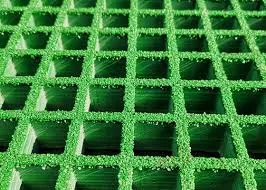
-
 Afrikaans
Afrikaans -
 Albanian
Albanian -
 Amharic
Amharic -
 Arabic
Arabic -
 Armenian
Armenian -
 Azerbaijani
Azerbaijani -
 Basque
Basque -
 Belarusian
Belarusian -
 Bengali
Bengali -
 Bosnian
Bosnian -
 Bulgarian
Bulgarian -
 Catalan
Catalan -
 Cebuano
Cebuano -
 China
China -
 China (Taiwan)
China (Taiwan) -
 Corsican
Corsican -
 Croatian
Croatian -
 Czech
Czech -
 Danish
Danish -
 Dutch
Dutch -
 English
English -
 Esperanto
Esperanto -
 Estonian
Estonian -
 Finnish
Finnish -
 French
French -
 Frisian
Frisian -
 Galician
Galician -
 Georgian
Georgian -
 German
German -
 Greek
Greek -
 Gujarati
Gujarati -
 Haitian Creole
Haitian Creole -
 hausa
hausa -
 hawaiian
hawaiian -
 Hebrew
Hebrew -
 Hindi
Hindi -
 Miao
Miao -
 Hungarian
Hungarian -
 Icelandic
Icelandic -
 igbo
igbo -
 Indonesian
Indonesian -
 irish
irish -
 Italian
Italian -
 Japanese
Japanese -
 Javanese
Javanese -
 Kannada
Kannada -
 kazakh
kazakh -
 Khmer
Khmer -
 Rwandese
Rwandese -
 Korean
Korean -
 Kurdish
Kurdish -
 Kyrgyz
Kyrgyz -
 Lao
Lao -
 Latin
Latin -
 Latvian
Latvian -
 Lithuanian
Lithuanian -
 Luxembourgish
Luxembourgish -
 Macedonian
Macedonian -
 Malgashi
Malgashi -
 Malay
Malay -
 Malayalam
Malayalam -
 Maltese
Maltese -
 Maori
Maori -
 Marathi
Marathi -
 Mongolian
Mongolian -
 Myanmar
Myanmar -
 Nepali
Nepali -
 Norwegian
Norwegian -
 Norwegian
Norwegian -
 Occitan
Occitan -
 Pashto
Pashto -
 Persian
Persian -
 Polish
Polish -
 Portuguese
Portuguese -
 Punjabi
Punjabi -
 Romanian
Romanian -
 Russian
Russian -
 Samoan
Samoan -
 Scottish Gaelic
Scottish Gaelic -
 Serbian
Serbian -
 Sesotho
Sesotho -
 Shona
Shona -
 Sindhi
Sindhi -
 Sinhala
Sinhala -
 Slovak
Slovak -
 Slovenian
Slovenian -
 Somali
Somali -
 Spanish
Spanish -
 Sundanese
Sundanese -
 Swahili
Swahili -
 Swedish
Swedish -
 Tagalog
Tagalog -
 Tajik
Tajik -
 Tamil
Tamil -
 Tatar
Tatar -
 Telugu
Telugu -
 Thai
Thai -
 Turkish
Turkish -
 Turkmen
Turkmen -
 Ukrainian
Ukrainian -
 Urdu
Urdu -
 Uighur
Uighur -
 Uzbek
Uzbek -
 Vietnamese
Vietnamese -
 Welsh
Welsh -
 Bantu
Bantu -
 Yiddish
Yiddish -
 Yoruba
Yoruba -
 Zulu
Zulu
FRP Materials in Heat and Nuclear Power Applications for Enhanced Efficiency and Durability
FRP Materials for Heat and Nuclear Power Applications
Fiber-Reinforced Polymer (FRP) materials are increasingly being utilized in a variety of industries due to their unique properties, such as exceptional strength-to-weight ratios, corrosion resistance, and thermal insulation capabilities. In the context of heat and nuclear power applications, FRPs offer significant advantages, making them an attractive alternative to traditional materials like metals and ceramics.
One of the primary benefits of FRP materials in heat applications is their high thermal stability. They can withstand elevated temperatures without significant degradation, making them suitable for use in heat exchangers, piping systems, and insulation components in power plants. The ability of FRPs to maintain mechanical properties under thermal stress is critical, particularly in environments where temperature fluctuations are common.
In nuclear power applications, the importance of material performance under extreme conditions cannot be overstated. FRPs have shown promise in areas such as radiation shielding and containment structures. Unlike conventional materials, FRPs can be designed to absorb and mitigate radiation, thereby protecting both human operators and sensitive electronic equipment. Their lightweight nature also contributes to reduced construction and operational costs, as less material is required to achieve the same level of protection.
frp materials for heat and nuclear power applications

Furthermore, FRPs possess excellent corrosion resistance, which is vital in environments exposed to various chemicals and cooling agents. Conventional materials often succumb to corrosion over time, leading to operational inefficiencies and increased maintenance costs. FRPs, on the other hand, can withstand harsh conditions found in nuclear facilities, resulting in longer service life and reduced need for replacements.
Additionally, the ease of fabrication of FRP materials allows for versatile design options. They can be molded into complex shapes, facilitating the creation of custom components tailored to specific application requirements. This flexibility is particularly beneficial in the renovation or upgrade of existing power plants, where bespoke solutions are often necessary.
As the demand for renewable and sustainable energy sources increases, the role of FRP materials is expected to grow. Their lightweight and high-strength characteristics enable more efficient designs and constructions, contributing to the overall sustainability goals of the energy sector. Moreover, ongoing research into enhancing the properties of FRPs—such as improving their thermal conductivity and resistance to environmental degradation—will further cement their place in the future of heat and nuclear power applications.
In conclusion, Fiber-Reinforced Polymer materials present a valuable solution for the challenges faced in heat and nuclear power applications. Their unique combination of strength, lightweight nature, corrosion resistance, and adaptability make them an essential consideration for the industry as it moves towards more efficient and sustainable energy solutions. The ongoing innovation and development in FRP technology will play a crucial role in advancing the capabilities of power generation systems.









